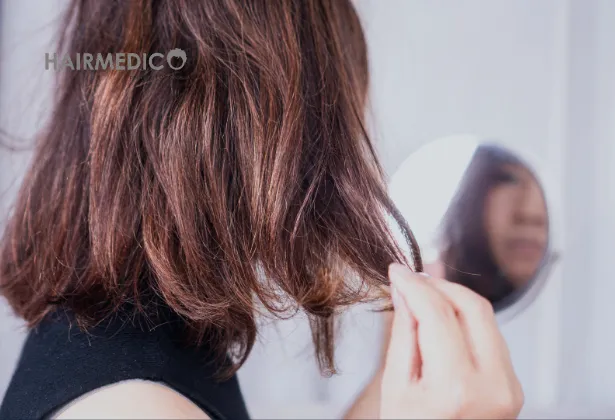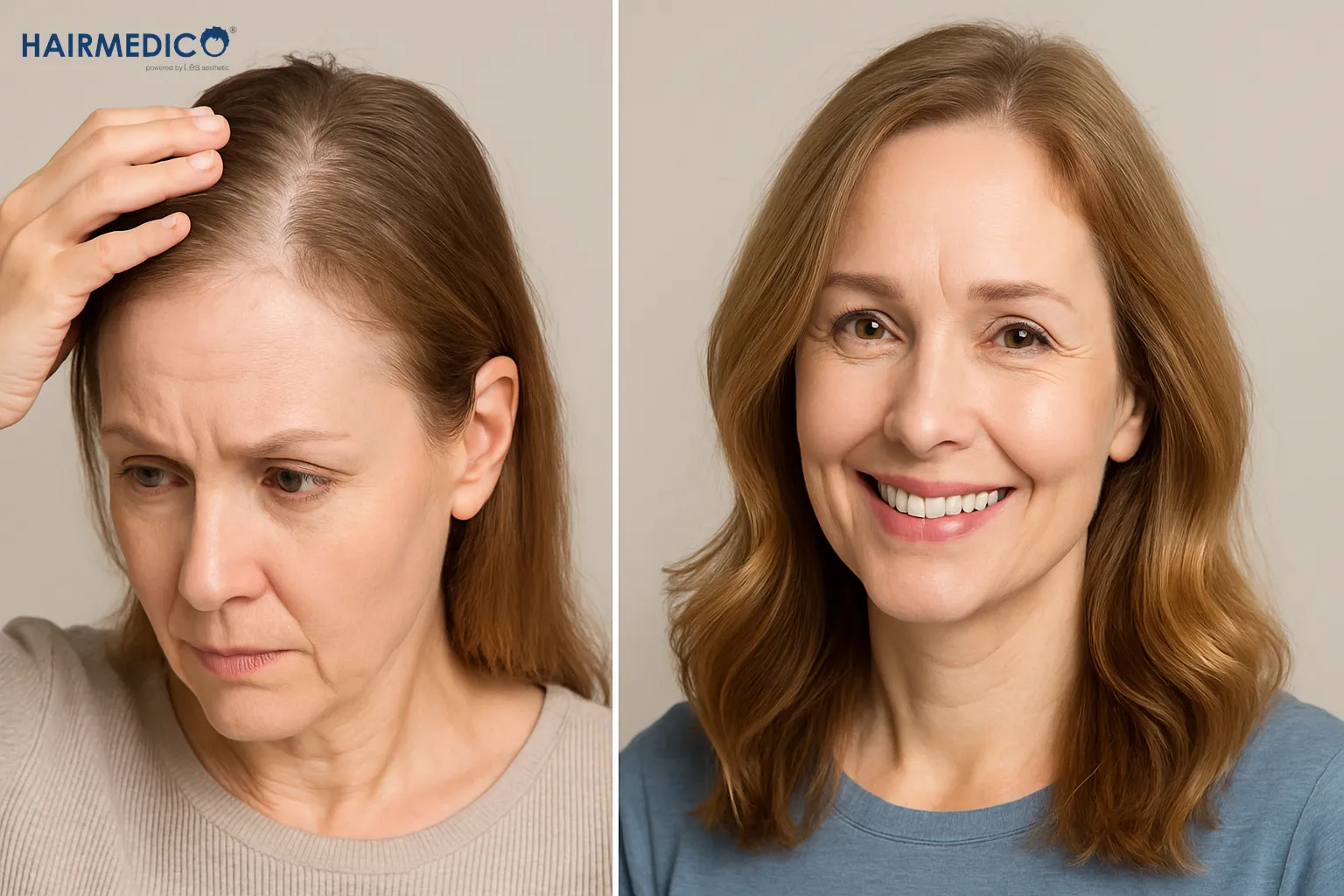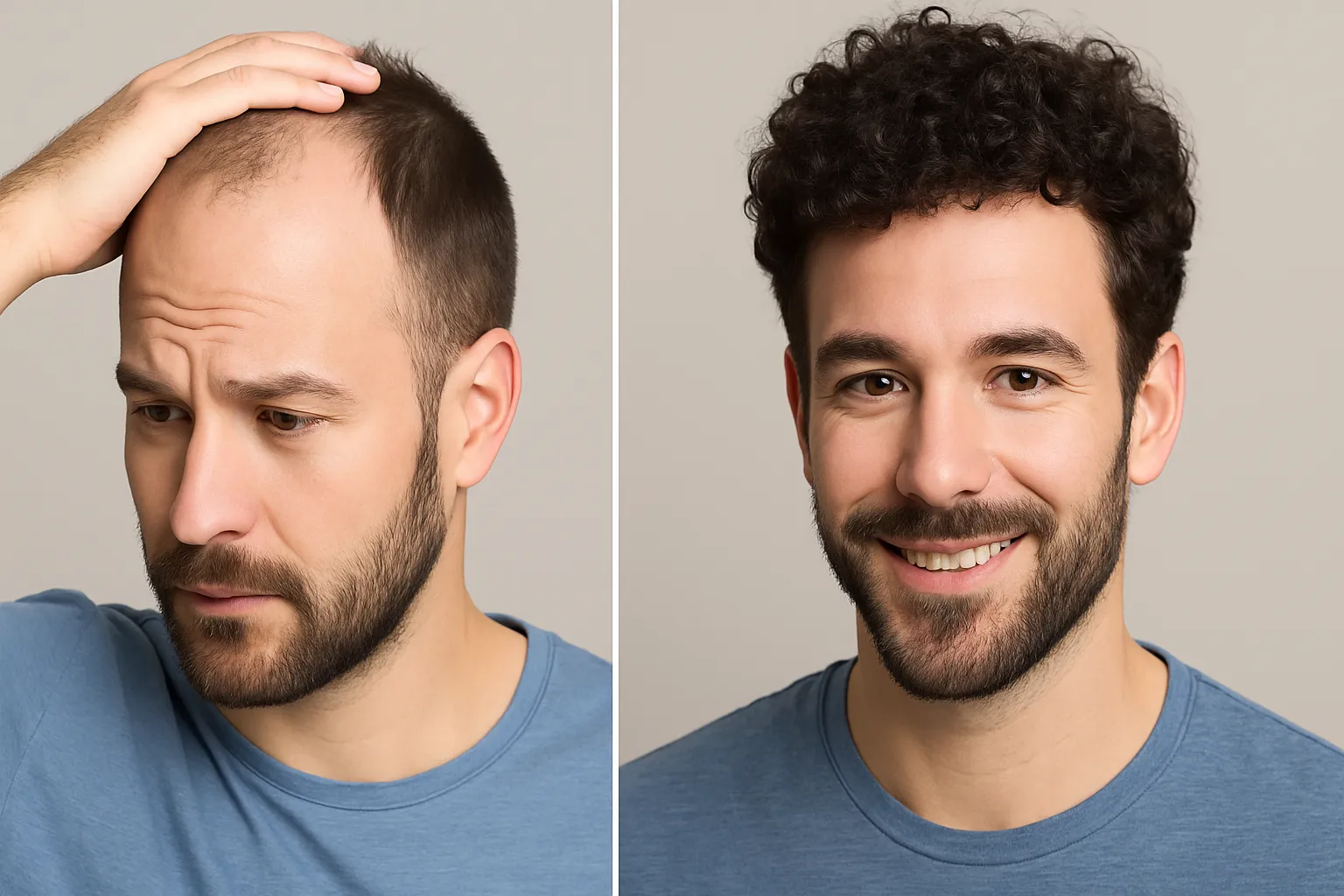
Hair transplantation has helped millions of people worldwide restore their confidence, appearance, and self-esteem. But aside from covering bald spots and filling in thinning areas, one question continues to arise among patients:
Can a hair transplant change the texture of my hair?
In 2025, with advancements like FUE, DHI, and AI-guided transplantation such as Algorithmic FUE™, the boundaries of what's possible in hair restoration continue to evolve. However, when it comes to hair texture—whether you want curly hair instead of straight, or thicker strands in place of fine ones—the science has clear answers and limitations.
In this blog, we’ll explore the truth behind post-transplant hair texture changes, what patients are actually experiencing, and what role genetics, technique, and healing play in shaping final results.
Before diving into how hair transplants interact with texture, it's important to understand what hair texture actually is.
Hair texture refers to several characteristics:
Strand thickness (fine, medium, coarse)
Curl pattern (straight, wavy, curly, coily)
Density (how closely packed the follicles are)
Elasticity and porosity
Your hair texture is determined primarily by genetics. Hair follicles have a pre-set blueprint based on your DNA that determines the curvature of the follicle (which controls curl), the size of the hair shaft, and its resilience.
When hair is transplanted from the donor area (typically the back or sides of the scalp) to the recipient area, the follicle’s genetic properties remain the same.
That means:
Straight hair will continue to grow straight, even if transplanted to a previously curly area
Curly hair will stay curly, even on a straight-framed hairline
The structure of the follicle is preserved during FUE or DHI extraction. The shape of the hair bulb and follicle opening—which determines curl pattern—is not modified during the surgery.
So, a hair transplant cannot give you a new hair texture, but…
This is where it gets interesting. Many patients report their new hair feels:
Thicker or coarser
Frizzier or less manageable
More curly or wavy
Dryer than before
Let’s explore why this happens, and why it’s not a true “texture change” in the genetic sense.
After a transplant, new hair enters the telogen and then anagen phase. The first few months of growth often produce hair that is:
Fine, curly, or frizzy
Different in color or thickness
This is temporary and caused by the healing environment. The scalp undergoes microtrauma, inflammation, and increased sensitivity. New follicles emerging may appear distorted due to minor scar tissue or post-op scabbing.
By Month 6–12, texture usually normalizes.
After surgery, patients are often advised to avoid:
Chemical styling
Heat treatments
Harsh shampoos or coloring agents
This can result in hair that appears more natural, dry, or coarse, especially if the patient previously used smoothing or straightening techniques. What seems like a texture change is often just your natural hair texture showing more clearly.
Sometimes, people notice a difference because:
The donor hair (usually from the occipital zone) might be thicker or straighter than the crown or hairline hair
Once moved to the front, that thicker texture stands out more
This is especially common in:
Afro hair transplant procedures
Patients with mixed ethnic backgrounds
Female patients who experience frontal thinning and receive denser grafts
This phenomenon is often called “transplant wave” or “post-op kink”.
In the first year, transplanted hair might look wavier or curlier. This is believed to be caused by:
The angle of implantation
The healing pattern of the skin
Temporary tension from scarring
Again, this is not permanent and should normalize over time.
Unfortunately, no.
Since the transplanted follicles are genetically coded, you cannot:
Turn straight hair curly
Turn fine hair into thick strands
Make Asian hair into Afro-textured curls (or vice versa)
What you can do post-transplant includes:
Perms or relaxers (only after full healing)
Keratin treatments or texturizing products
PRP or mesotherapy to enhance volume
High graft density to simulate fullness
But be cautious: styling should begin only after 6–12 months, under clinical advice.
At Hairmedico, Dr. Arslan Musbeh developed Algorithmic FUE™, a system that maps donor quality, direction, curl, and density through AI-assisted imaging before implantation.
This allows:
Matching donor hair texture with recipient area needs
Designing natural curvature and hairline density
Minimizing shock loss and trauma
Long-term texture harmony


Some clinics use body hair (chest, beard) for patients with limited donor area. This hair can differ in:
Texture (more coarse)
Growth rate (slower)
Curl pattern (tighter)
When beard hair is implanted into the scalp, for example, it retains its coarse and thick characteristics.
So yes, using alternative donor sources can result in mixed textures, but it’s a combination—not a transformation.
Women often notice:
Thicker regrowth
Slight curl or wave in early months
Less frizz if proper care is taken
But these are transient. Especially in woman hair transplant cases, natural texture returns once hormones and scalp balance are restored.
| Claim | Truth |
|---|---|
| Hair transplant gives you curly hair | ❌ False |
| Hair feels different after surgery | ✅ True (temporarily) |
| Hair texture changes permanently | ❌ Rare and not expected |
| Using body hair affects texture | ✅ Yes (naturally coarser) |
| You can influence texture post-op | ✅ With styling only |
Don’t panic if your hair looks or feels different
Give your scalp 9–12 months to heal fully
Avoid harsh chemicals and heat in the first year
Choose a clinic like Hairmedico that respects follicle structure
Ask about Algorithmic FUE™ for natural outcomes
👉 Before & After Gallery
See real patient results and hair transformations.
👉 Hair Transplant for Women
Learn how we approach female hair loss with care and precision.
👉 Post-Op Recovery Plan
Get detailed instructions on how to protect your results.
👉 Hair Transplant Prices
Discover transparent pricing and custom packages.
👉 Beard Transplant Details
Explore facial hair solutions with natural results.
Schedule your online consultation with Hairmedico and receive a personalized hair analysis directly from
Dr. Arslan Musbeh, a leading expert in modern hair restoration.